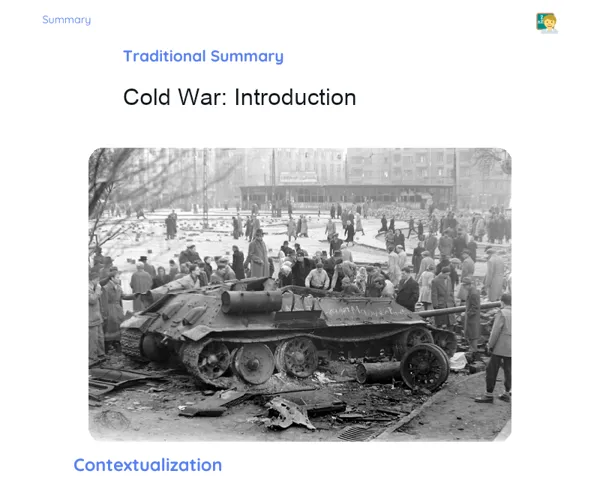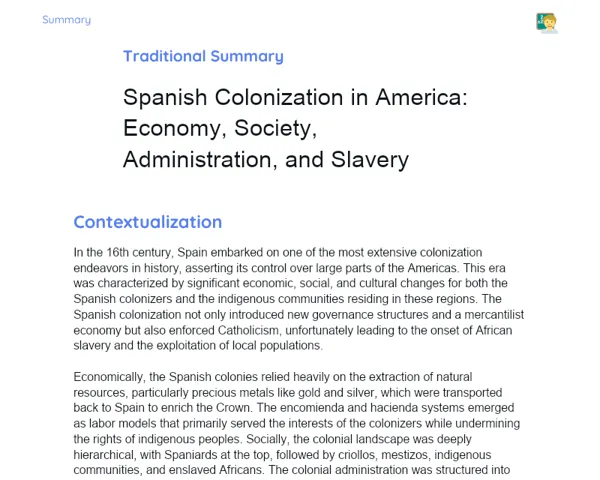Objectives
1. 🌍 Understand the historical context and the reasons behind the Great Navigations, especially focusing on the trailblazing efforts of Portugal and Spain.
2. ⚓ Analyze how these explorations impacted the rise of European maritime empires and their global repercussions.
3. 🤔 Develop critical thinking skills by linking the Great Navigations to modern issues of globalization and cultural exchange.
Contextualization
Did you know that the Great Navigations transformed not only the maps of the world but also enriched our cuisine? Ingredients like tomatoes, corn, and even chocolate found their way from the Americas to Europe thanks to these voyages. Just think of Italian food without its beloved tomatoes or Swiss chocolate losing its famous flavor! The Great Navigations truly spiced up global cuisine and influenced many facets of our modern lifestyle.
Important Topics
Pioneering Efforts of Portugal and Spain
In the 15th century, Portugal and Spain led the charge in the Great Navigations, propelled by advances in technology and the unyielding quest for new trade routes. Under Prince Henry the Navigator, Portugal charted the African coastline, while Spain, with Christopher Columbus, ventured westwards and stumbled upon the Americas.
-
Portugal crafted the caravel, a swift and nimble ship ideal for ocean exploration.
-
With backing from the Catholic Monarchs, Spain financed Columbus's journey, which unexpectedly led to the New World.
-
These nations set the stage for today's global trade network and the race for overseas territories.
Global Impacts
The Great Navigations profoundly reshaped the global economy, politics, and culture. With new trade routes opening up and fresh territories discovered, international trade boomed, but it also sparked conflicts and colonial exploitation.
-
The arrival of new ingredients and goods, like spices and precious metals, transformed European diets and economies.
-
Cultural encounters led to significant exchanges but also conflict and the oppression of indigenous peoples.
-
These explorations were key to establishing colonial empires and reshaping the modern political map.
Navigation Technologies
Technological advancements in navigation played a pivotal role in the success of the Great Navigations, allowing sailors to journey further with precision. Tools like the astrolabe and compass proved essential for open-sea navigation.
-
The astrolabe helped navigators gauge latitude by observing celestial bodies' heights above the horizon.
-
The compass, which pointed towards magnetic north, was crucial for maintaining a steady course over long distances.
-
More accurate, detailed maps began to take shape, aiding route planning and land exploration.
Key Terms
-
Great Navigations: The 15th-century era marked by European ocean explorations led by Portugal and Spain, leading to the discovery of new lands and the expansion of global trade.
-
Caravel: A type of ship developed by the Portuguese, recognized for its agility and ability to sail against the wind, vital for successful maritime ventures.
-
Astrolabe: A device used to measure the altitude of celestial bodies above the horizon, essential for determining latitude during voyages.
For Reflection
-
How did the Great Navigations change the way Europe and the wider world was perceived?
-
In what ways did technological innovations drive the Great Navigations, and what insights does this provide about the interplay between technology and exploration?
-
What were the moral and social implications of the cultural encounters initiated by the Great Navigations?
Important Conclusions
-
The Great Navigations were more than just exploratory voyages; they represented a transformative revolution that influenced the modern world. The pioneering efforts of Portugal and Spain led to the discovery of new routes, lands, and cultures.
-
These journeys not only broadened Europe's geographical and cultural understanding but also stimulated global trade, introduced new products and cuisines to Europe, and laid the groundwork for our interconnected world today.
-
Grasping the significance of the Great Navigations is key to understanding the roots of globalization and the ongoing importance of discoveries and cultural exchanges that shape our contemporary society.
To Exercise Knowledge
Craft an imaginative logbook as a 15th-century navigator. Detail the hardships faced during the voyage, the territories encountered, and interactions with diverse cultures. Use your creativity to envisage what a journey during the Great Navigations may have entailed.
Challenge
World Map Challenge: Attempt to recreate a world map reflecting the landscape before and after the Great Navigations. Use insights from the lesson to illustrate how newly discovered lands were integrated into European knowledge, altering the perception of the world.
Study Tips
-
Familiarize yourself with maps depicting the routes of the Great Navigations and try to memorize which countries explored each area across the globe.
-
Watch documentaries or read supplementary articles about the impact of the Great Navigations on global cuisine to gain insight into how food exchanges influenced modern diets.
-
Investigate the navigational technologies utilized during the Great Navigations, such as the astrolabe and compass, and delve into how these tools functioned.



